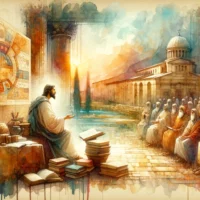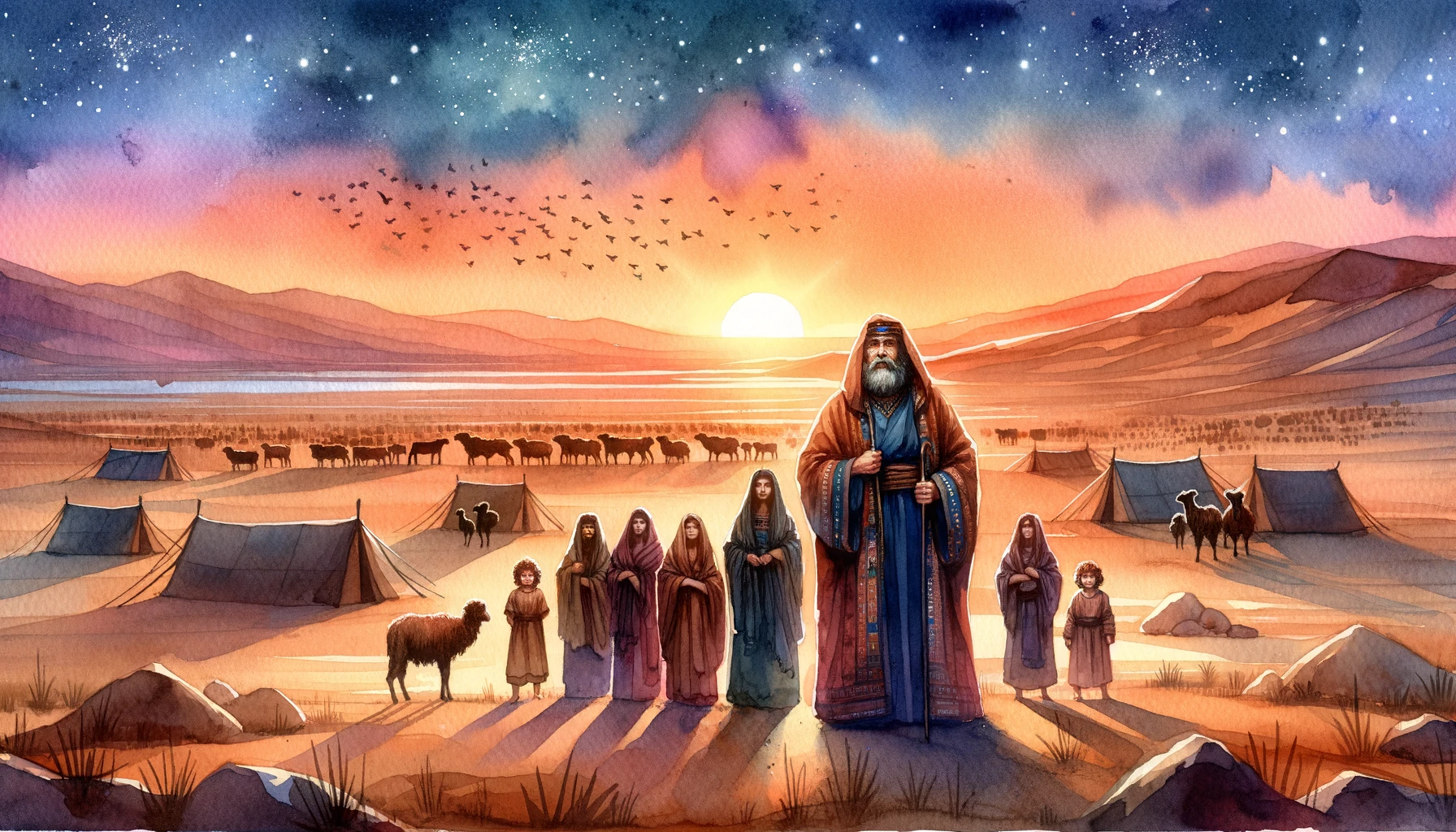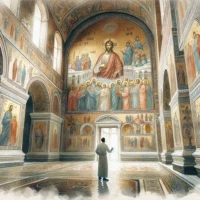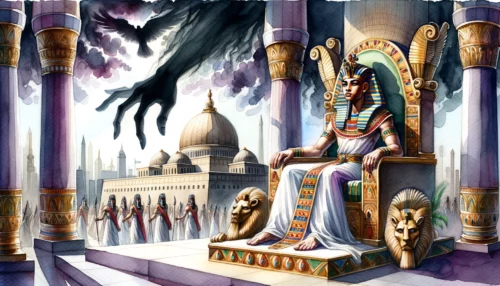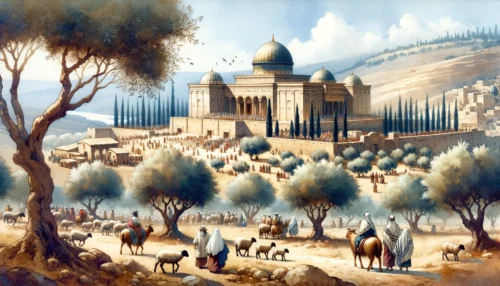The Bible is a rich tapestry, full of complex narratives that need to be viewed through a lens of cultural, historical, and spiritual contexts. One such complex narrative is the existence of polygamy, particularly in the Old Testament. As we explore this topic, we will ask the question: “Why did God permit polygamy in the Bible?” Understanding this question can illuminate the broader aspects of God’s dealings with humanity, His divine plan, and His immutable character.
Contextual Understanding of Polygamy in Biblical Times
We need to step back and look at the cultural and historical landscape of biblical times to understand the practice of polygamy. It was prevalent not just among the Israelites but also among many ancient civilizations. Like many cultural practices, polygamy had specific social, economic, and political reasons behind its existence.
One of the main reasons was to ensure the continuity of family lines and increase family workforce. In those days, survival was harsh. Families needed to have numerous children who could contribute to the household economy by participating in farming, animal husbandry, and other labor-intensive tasks (Genesis 30:1-24). Similarly, it was common for men to die in wars, leaving many women without potential husbands (Judges 21:14-23). Polygamy was seen as a solution to prevent such women from living in destitution.
From a political perspective, it was common for kings to have multiple wives as a symbol of power and prestige. The practice also served as a means to form alliances with other tribes or nations, ensuring peace and shared resources. King Solomon, for example, had many wives, many of whom were daughters of foreign leaders, essentially solidifying political relationships (1 Kings 11:1-3).
Despite its prevalence, the Bible does not shy away from showing the problems and strife that resulted from polygamy. The competition between Sarah and Hagar (Genesis 16:1-16), the tension among Jacob’s wives (Genesis 29:15-30:24), and the consequences of Solomon’s multiple marriages (1 Kings 11:1-13) all demonstrate that polygamy brought more turmoil than peace.
From the very beginning, God’s creation of marriage involved one man and one woman (Genesis 2:24). The Bible makes it clear that monogamy was God’s original design for marriage. Polygamy came as a result of human sin and departure from God’s plan, much like other societal issues that arose as humans strayed from God’s path.
The existence of polygamy in biblical times can be traced back to specific social, economic, and political reasons. It was used as a strategy for survival, for ensuring the continuation of family lines, increasing the family workforce, and protecting women left husbandless. It was also a symbol of power and a tool for forging political alliances. However, the Bible does not hide the complications and conflicts arising from this practice. Though polygamy was prevalent, it was not part of God’s original design for marriage, which is clearly described as a monogamous relationship.
Interpreting God’s Tolerance of Polygamy
A common question that arises when considering polygamy in the Bible is why God seemed to tolerate it. God’s tolerance, however, should not be mistaken for approval. A key principle found throughout the Bible is that God often allows humanity the freedom to make choices, even when those choices lead to less than ideal consequences (Deuteronomy 30:19-20).
While God permitted polygamy, there is no evidence in the Bible that He ever commanded it. It was a human choice, influenced by the societal norms and pressures of the time. God often met people where they were, within their cultural context, and guided them gradually towards His perfect will (Exodus 16:2-4).
God’s handling of polygamy demonstrates His patience and long-suffering nature. He was willing to work with the Israelites despite their flawed practices, seeking to bring them and their society closer to His intentions over time (Romans 2:4).
Even in allowing polygamy, God placed certain restrictions around it. For example, He forbade the Israelite kings from multiplying wives for themselves, a rule King Solomon infamously broke, leading to grave consequences (Deuteronomy 17:17).
The Bible also points out the troubles and dysfunctions that inevitably occurred in polygamous families, underscoring that this was not the ideal familial arrangement (1 Samuel 1:1-7). This depiction is a subtle but consistent critique of the practice, pointing towards God’s original design of monogamy.
God worked through these complicated family situations to fulfill His divine purposes. The twelve tribes of Israel, who were instrumental in the unfolding of God’s plan for His people, originated from Jacob’s polygamous family (Genesis 29:31-30:24).
God’s tolerance of polygamy in the Old Testament reflects His patience and allowance for human free will, rather than His approval of the practice. He often worked within the cultural norms of the time to guide His people, indicating His long-suffering nature. Even while tolerating polygamy, God placed certain boundaries around it and highlighted the negative outcomes that came from it. Despite the complications and dysfunctions that polygamy brought, God was able to work through these situations to fulfill His divine purposes. This reveals a God who is merciful, patient, and able to bring about good, even from flawed human decisions.
Polygamy Versus God’s Ideal for Marriage
Understanding God’s ideal design for marriage allows us to view polygamy from a biblical perspective more accurately. At the very beginning, in the Garden of Eden, God instituted marriage. It was clear from this divine act that His design involved one man and one woman united in a covenant relationship, as indicated by Adam and Eve’s union (Genesis 2:24).
When Jesus taught about marriage, He reiterated this original design. Speaking to the Pharisees, He referenced the Genesis account, emphasizing the “one flesh” concept, indicating a union between one man and one woman (Matthew 19:4-6). This not only reaffirmed God’s design for marriage but also challenged the various deviations from this design, including polygamy.
Paul, in his letters to the early Christian churches, also reinforced the concept of monogamous marriage. His instructions for church leaders, like bishops and deacons, explicitly state that they should be the husband of one wife, showcasing monogamy as a principle for Christian relationships (1 Timothy 3:2,12).
It’s clear that, while polygamy was permitted in Old Testament times due to societal norms and human choices, it was not God’s ideal. The New Testament brings the focus back to the original design, emphasizing monogamy as God’s plan for marital relationships.
God’s work of redemption includes the reality that human sin and societal norms often deviate from His ideal designs. Through Jesus Christ, God offers forgiveness and reconciliation, opening the way for all to return to His original plan. This doesn’t just apply to marriage but to all areas of life. God’s ideal designs, whether for marriage, family, or community, serve as a beacon calling us back to the path He has intended for us.
God’s ideal design for marriage, as presented in the Bible, is a monogamous relationship, as evidenced by the original union of Adam and Eve. This design was reaffirmed by Jesus and Paul in the New Testament. Polygamy, prevalent in Old Testament times, deviated from this divine blueprint. Despite human choices leading away from God’s ideal, His work of redemption allows a return to His original plan. His ideal designs serve as guidelines, leading us back to the path He has intended, not just in the context of marriage, but in all areas of life.
Returning to the Divine Blueprint
Our discussion has shed light on the complex issue of polygamy in the Bible. We’ve uncovered its historical and societal contexts, investigated God’s tolerant approach towards it, and refocused on God’s original design for marriage as a monogamous relationship. We’ve seen how God, in His patience and mercy, allows human decisions, even when they veer from His ideal, without endorsing them. He brings us back to His original intentions through His teachings and redemptive work.
To further engage with this topic, consider these questions:
- How does understanding the cultural context of biblical times influence your perception of biblical narratives like polygamy?
- In what ways can you see God’s patience and tolerance reflected in your own life?
- How does the knowledge of God’s ideal design for marriage inform and influence your personal relationships?
In closing, it is always enlightening to recognize that our faith is rooted in a God who, amidst human imperfections and societal norms, patiently guides us towards His divine blueprint. This fills us with hope, knowing that God’s ideal designs, His perfect intentions, can and will ultimately be fulfilled. This knowledge strengthens our faith, and it’s a beautiful testament to the transformational power of God’s love.



